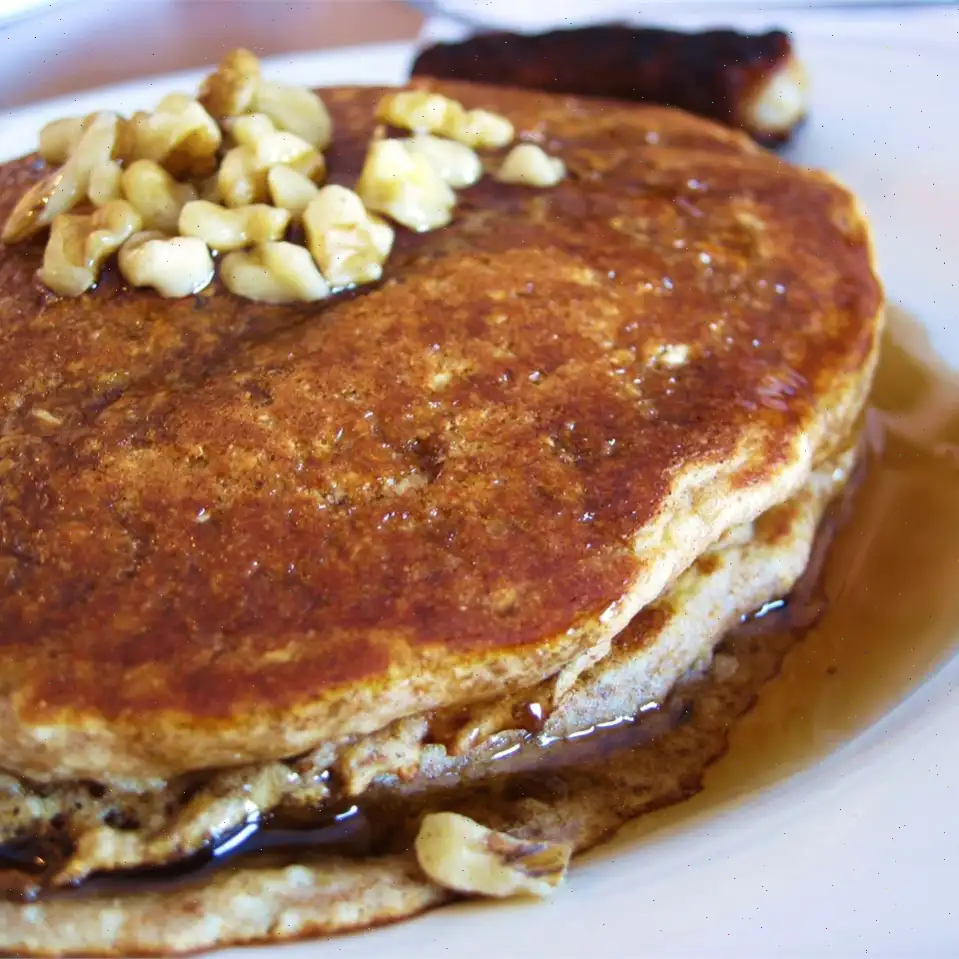
Goat Cheese Omelet Recipe
This fluffy omelette, filled with creamy goat cheese and fresh chives, is the perfect dish to start your day or enjoy as a quick meal. Follow these simple steps to create a savory breakfast in no time.
Ingredients
- 3 large eggs
- 1 teaspoon water
- Salt and freshly ground black pepper to taste
- 1 tablespoon butter
- 1 tablespoon minced fresh chives
- 2 ounces plain goat cheese, crumbled
Directions
Step 1: In a bowl, whisk together eggs, water, salt, and pepper until the yolks and whites are fully combined and the mixture is light and frothy. This should take about 30 seconds.
Step 2: Heat a nonstick skillet (8 inches in diameter) over medium heat and melt the butter. Once melted, pour in the egg mixture.
Step 3: Stir the eggs rapidly for about 20 to 30 seconds, or until they just begin to set. Spread the eggs out evenly in the skillet, and let them cook for another 10-15 seconds until the top is slightly underdone and shiny. If needed, move any uncooked egg around the edges of the skillet to cook evenly.
Step 4: Once the omelette is nearly cooked through, lower the heat to medium-low to avoid browning. Place the crumbled goat cheese in the center of the omelette, and sprinkle with about 2 teaspoons of minced chives.
Step 5: Carefully fold the omelette in thirds. First, fold one side over the cheese in the middle, then fold the other side over to enclose the filling.
Step 6: Slide the omelette onto a plate, and sprinkle the remaining chives on top before serving.
Nutrition Facts
| Nutrient | Amount per Serving | % Daily Value |
|---|---|---|
| Calories | 468 | |
| Total Fat | 38g | 48% |
| Saturated Fat | 20g | 101% |
| Cholesterol | 615mg | 205% |
| Sodium | 860mg | 37% |
| Total Carbohydrates | 1g | 1% |
| Dietary Fiber | 0g | 1% |
| Total Sugars | 1g | |
| Protein | 30g | 59% |
| Vitamin C | 2mg | 2% |
| Calcium | 171mg | 13% |
| Iron | 4mg | 21% |
| Potassium | 238mg | 5% |
Note: Nutrient information is based on available data and may vary depending on ingredients used.

The Goat Cheese Omelet is a delightful, simple dish that combines the smooth, tangy flavor of goat cheese with the richness of eggs. While the omelet itself has a few simple ingredients, the addition of goat cheese creates a luxurious and savory meal that's perfect for breakfast or brunch.
History of the Goat Cheese Omelet
The origins of the omelet can be traced back to France, where it has been a staple of French cuisine for centuries. The dish is thought to have originated in the 16th century. While the traditional French omelet uses only eggs, butter, and seasoning, regional variations like the Goat Cheese Omelet evolved over time, incorporating local ingredients such as goat cheese. Goat cheese, known for its creamy texture and sharp flavor, became popular in various parts of Europe, especially in rural areas where goats were more commonly raised. The combination of eggs and goat cheese in an omelet has become a beloved dish in France and beyond.
Regional Variations of the Goat Cheese Omelet
In France, omelets are often customized to reflect local tastes and available ingredients. For instance, in the Provence region, fresh herbs like thyme, rosemary, and basil might be added to the omelet, along with goat cheese from the nearby farms. In the regions of Normandy and Brittany, cider may be served alongside the omelet, pairing perfectly with the goat cheese. In more urban settings, different types of goat cheese, such as herbed or smoked varieties, can be used to create unique flavor profiles. These variations reflect the diversity of French culinary traditions, making the Goat Cheese Omelet a dish that can adapt to many tastes and regions.
How It Differs from Similar Dishes
While the Goat Cheese Omelet may seem similar to other cheese-filled omelets, its distinct flavor comes from the specific use of goat cheese. Unlike cheddar, mozzarella, or Swiss, goat cheese has a more pronounced, tangy taste that pairs wonderfully with the smooth texture of the eggs. Additionally, the texture of goat cheese, which is creamy yet crumbly, adds a different mouthfeel compared to other cheeses, making it stand out. In comparison, dishes like a classic cheese omelet or a Spanish tortilla (which often uses potatoes) are more neutral in flavor and less rich in terms of texture.
Where It Is Typically Served
The Goat Cheese Omelet is widely served in French cafs, bistros, and homes as a satisfying breakfast or lunch option. In France, it is not uncommon for locals to enjoy an omelet as a light dinner, particularly when paired with a fresh salad or crusty bread. Beyond France, variations of the omelet can be found in other parts of Europe, particularly in Mediterranean countries where goat cheese is popular. It has also gained popularity in international brunch spots and is often found on menus in upscale restaurants seeking to offer a refined yet approachable dish.
Interesting Facts About the Goat Cheese Omelet
- The goat cheese used in this omelet is not only flavorful but also offers a range of health benefits. It is lower in fat and calories than many cows milk cheeses and contains probiotics that aid in digestion.
- In addition to its tangy flavor, goat cheese is a versatile ingredient that pairs well with a variety of other ingredients like herbs, roasted vegetables, and even fruits such as figs or apples.
- The goat cheese omelet is often associated with French culinary techniques, particularly the method of gently cooking eggs to create a tender and fluffy texture.
- Some variations of the Goat Cheese Omelet may also include additional fillings such as sauted mushrooms, spinach, or sun-dried tomatoes to enhance its flavor and nutritional content.
You can listen to this recipe in AI audio format. Simply click the play button below to listen to the content in a format that suits you best. It’s a great way to absorb information on the go!








